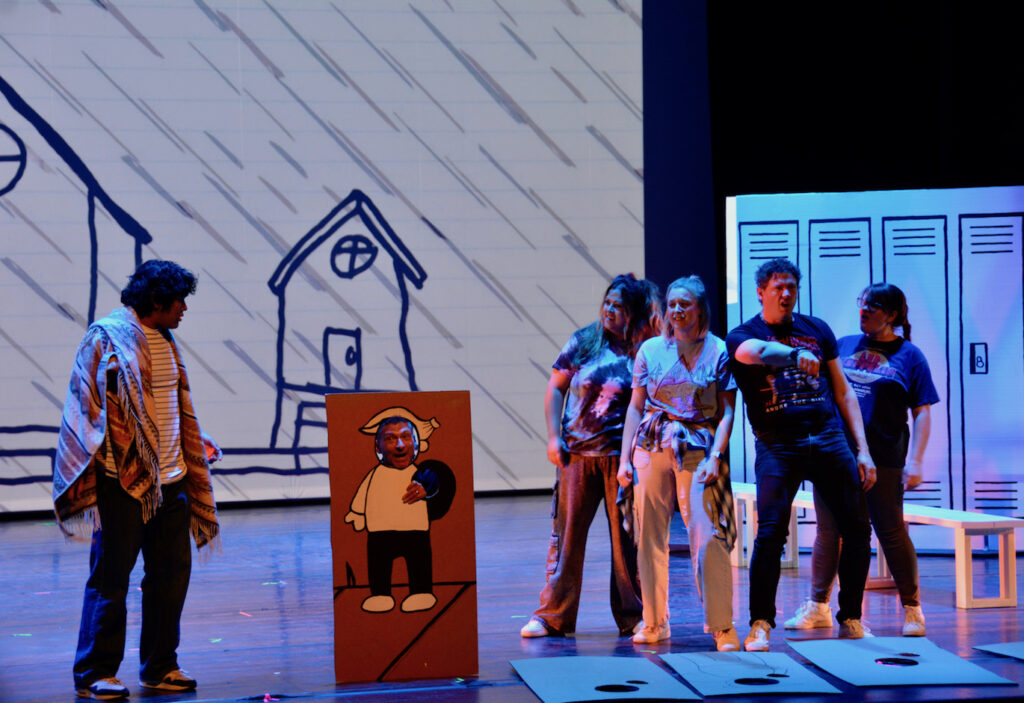I’m behind on posting my progress because after Week Four I was deeply immersed in the Artist in Schools Project with Riffel HighSchool.
Working with this Integrated Theatre Program was part of my motivation for learning some basic animation skills, with the goal of incorporating some animated elements into the projection-based set design.
One of the key scenes I wanted to include animation in was set in a rainstorm. The aesthetic of the whole show is centred around a ‘hand drawn’ (middle-schooler) comic /doodle style.
(Here’s the GIF I create – see the end of the post for a final production shot)

After learning how to create a GIF in week four, I decided that a GIF was the easiest way to pull off the rainstorm animation. I learned the basics of frame-by-frame in my week four exercises, but for that I’d just used text to keep it really simple…and focus on the technical foundations of frame-by-frame.
This week I’d need to use an onion skinning technique to reproduce my drawn image and shift it slightly in each frame. The goal was to draw a rainstorm, then shift the same drawing slightly from frame to frame in order to make it appear to be moving.
I used this new video tutorial to further understand how to do this using the onion skin technique I’d see in the week four video.
This video was one of the best I’ve watched so far.
It went through every step, including ones I’d missed in past videos. She clarified questions I’d had about setting up a new document size, and she moved through each choice with a bit more context and detail than past videos I’d watched. She also gave very specific tools and techniques for more involved animation that I needed. But I’d definitely use this video over the others for future learning.
So, what makes a good video tutorial?
I asked myself why this video tutorial seemed better than others I’d watched? These are things I noticed:
- She had a webcam embedded into her tutorial (does seeing her speak help understand the content…it felt like it did?)
- She moved slowly with her cursor when demonstrating how to use the tools in Gimp.
- She gave context and reasons for all her choices (made no assumptions about prior knowledge).
- She offered specificity within her process (each frame was labelled so I could grasp every change that was being made , she articulated the details of each tool as she used them, even if they were basic tools like colour fill).
I think in the end, it was the specificity that really helped.
This is something I’ll carry forward when I’m thinking about teaching and learning – and if I ever create my own videos for students.
But I’m still sitting with the idea that by seeing her face in the webcam somehow made her lesson easier to understand. I don’t know why? What are your thoughts about whether a webcam narration helps the learning process? I’m curious to know if others have had similar experiences during their online learning journey!
Here are some final images from the use of the rainstorm GIF within the That’s Possible production of Diary of a Wimpy Kid!

Riffel High School, That’s Possible (credit: Amaya Ander, 2025)

Riffel High School, That’s Possible (credit: Amaya Ander, 2025)
